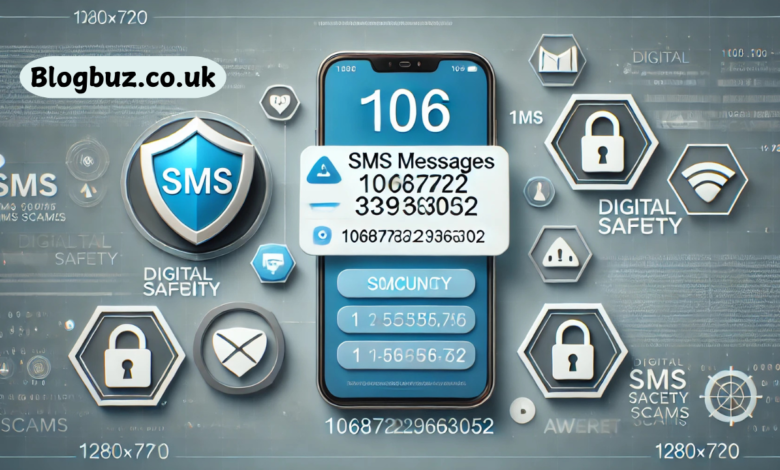10687823963052 短信 Messages: Purpose, Risks, and Safety Tips

In recent years, SMS notifications from numbers starting with “1068” or “1069,” like 10687823963052, have become common in China. Telecommunication providers and authorized services use such numbers for bulk SMS messaging to reach many users quickly and effectively. These messages, known as “106短信” (106 SMS), serve various purposes, from sending authentication codes to promotional offers. However, with the rising trend in SMS communication, these messages also raise concerns about security and privacy, as fraudsters sometimes exploit these numbers. This article explores the nature of 10687823963052 短信 messages, the benefits of legitimate bulk SMS, and essential precautions users should consider to protect themselves from potential risks.
What is a 10687823963052 短信 Message?
The number 10687823963052 follows a unique structure used by many bulk SMS services in China. These messages are commonly part of official services intended to convey essential information to users. Some typical examples include:
- Banking Alerts: Notifications for account activity, such as deposits or withdrawals.
- Verification Codes: One-time passcodes for account logins, purchases, or other secure transactions.
- Service Updates: Information on subscription renewals, service interruptions, or new feature launches.
- Promotional Offers: Special deals, discounts, or event notifications.
Telecommunication authorities often regulate these numbers, ensuring they meet service standards. Yet, as with any widely used service, malicious entities have occasionally exploited these channels for scams, making awareness essential.
Legitimate Uses of 106 SMS Numbers
Most “1068” and “1069” numbers, such as 10687823963052, are used by authorized service providers and organizations with permission to send bulk SMS notifications. Here are some examples of legitimate uses:
- E-commerce Confirmations: Many online platforms send purchase confirmations, delivery updates, or refunds through SMS.
- Security Alerts: Financial institutions send real-time alerts to notify users of unusual account activity.
- Government Notifications: Local governments may use these numbers to inform residents about public services, health alerts, or policy updates.
- Customer Support: Telecommunications companies use 106 numbers to respond to service inquiries and feedback.
How to Identify Authentic Messages from 10687823963052
While many “1068” and “1069” messages are legitimate, it’s essential to distinguish between real messages and potential scams. Here’s how:
- Check for a Recognized Sender: Reputable companies often include their name or logo in messages.
- Avoid Links from Unknown Sources: Be cautious with any link or attachment within the message. Authentic companies rarely ask users to click on links directly from SMS.
- Verify with Customer Support: If unsure about the message, contact the organization’s official support line to confirm its authenticity.
- Avoid Sharing Personal Information: Legitimate services will not request private information, including bank account numbers, passwords, or personal identification numbers.
Common Types of Scams Using 106 SMS Numbers
Unfortunately, scammers have taken advantage of the trust users place in “106” SMS numbers. Some common scam types include:
- Phishing Links: These messages prompt users to click on a link, leading to fake websites that capture login credentials or personal information.
- Loan Offers: Messages offering quick loans or financial help often lure users with attractive rates but lead to fraudulent activities.
- Lottery and Prize Claims: Some messages assert that the reward’s winner must provide personal information or pay a small fee to claim it.
- Subscription Scams: Fraudulent messages trick users into subscribing to services with hidden fees by asking them to confirm by clicking a link or replying.
Why Scammers Use “106” Numbers
Scammers choose “106” numbers because they are widely trusted for official communications, and bulk SMS services are relatively inexpensive, costing as low as 0.03 RMB per message. This cost-effectiveness and a lack of strict regulations allow fraudsters to target many people cheaply.
Steps to Protect Yourself from Potential Risks
Given the potential risks associated with messages from 10687823963052 or similar numbers, taking the following protective measures can help secure your information and peace of mind:
- Enable SMS Filtering: Some mobile carriers and smartphones offer filtering options to identify and flag suspicious messages.
- Report Fraudulent Messages: Contact your telecom provider if you receive a suspicious message. Many providers have reporting options for SMS spam or scams.
- Be Cautious of Urgency: Messages that create urgency or pressure should be scrutinized, as fraudsters often use urgency to prompt quick responses.
- Use Multi-Factor Authentication (MFA): Multi-factor authentication increases security against unauthorized access and protects sensitive accounts.
What to Do If You’ve Interacted with a Scam SMS
If you suspect that you’ve clicked on a malicious link or provided personal information, it’s crucial to act quickly:
- Change Your Passwords: Update passwords for any accounts that may be compromised.
- Contact Financial Institutions: If banking or financial data may be affected, inform your bank immediately to monitor unusual activity.
- Install Security Software: Use trusted antivirus or mobile security software to scan your device for potential threats.
- Notify Relevant Authorities: There are dedicated services for reporting online and SMS fraud in China.
How Telecom Providers are Addressing SMS Scams
Recognizing the rise of fraud, telecom providers and regulatory authorities in China are implementing new strategies to protect users:
- Enhanced Authentication: Some providers require companies to use 106 SMS numbers to authenticate messages, reducing the likelihood of scams.
- Blocking Unverified Numbers: Telecom companies actively monitor SMS traffic and block numbers associated with fraudulent activity.
- Awareness Campaigns: Many providers run awareness campaigns, informing users about common scams and how to avoid them.
Conclusion
While 10687823963052 and similar 106 SMS numbers can serve valuable functions, it’s essential to remain cautious. These numbers are commonly used by businesses, banks, and government entities, but they can also be exploited for scams. By staying informed, taking precautions, and understanding the nature of these messages, you can protect yourself and others from potential risks. Always prioritize security when dealing with SMS, especially from numbers like 10687823963052, and when in doubt, verify with the service provider.
You May Also Read: How to Identify and Deal With Unknown Callers: Insights on Number 03316309046




